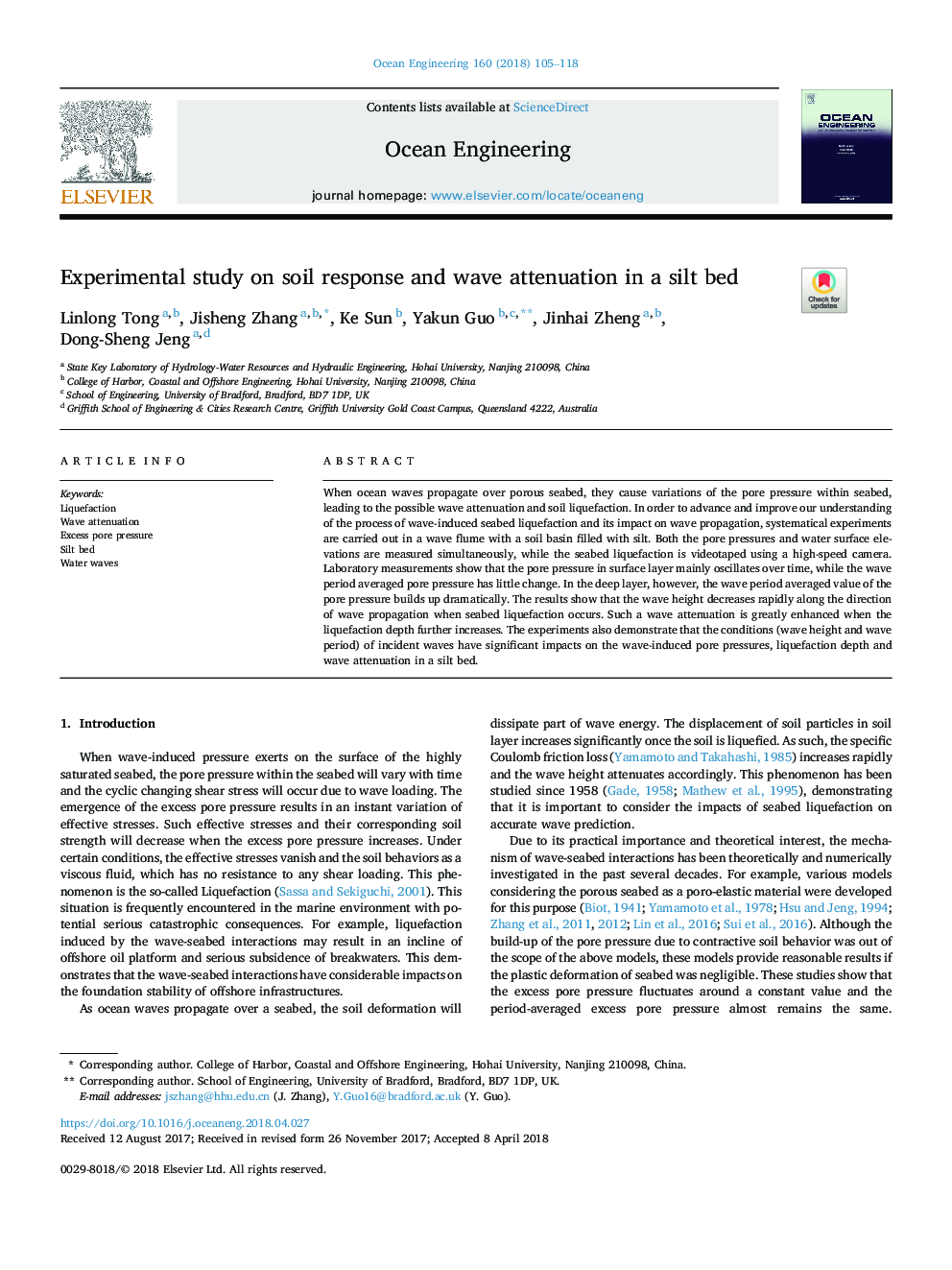| Article ID | Journal | Published Year | Pages | File Type |
|---|---|---|---|---|
| 8062191 | Ocean Engineering | 2018 | 14 Pages |
Abstract
When ocean waves propagate over porous seabed, they cause variations of the pore pressure within seabed, leading to the possible wave attenuation and soil liquefaction. In order to advance and improve our understanding of the process of wave-induced seabed liquefaction and its impact on wave propagation, systematical experiments are carried out in a wave flume with a soil basin filled with silt. Both the pore pressures and water surface elevations are measured simultaneously, while the seabed liquefaction is videotaped using a high-speed camera. Laboratory measurements show that the pore pressure in surface layer mainly oscillates over time, while the wave period averaged pore pressure has little change. In the deep layer, however, the wave period averaged value of the pore pressure builds up dramatically. The results show that the wave height decreases rapidly along the direction of wave propagation when seabed liquefaction occurs. Such a wave attenuation is greatly enhanced when the liquefaction depth further increases. The experiments also demonstrate that the conditions (wave height and wave period) of incident waves have significant impacts on the wave-induced pore pressures, liquefaction depth and wave attenuation in a silt bed.
Related Topics
Physical Sciences and Engineering
Engineering
Ocean Engineering
Authors
Linlong Tong, Jisheng Zhang, Ke Sun, Yakun Guo, Jinhai Zheng, Dong-Sheng Jeng,
